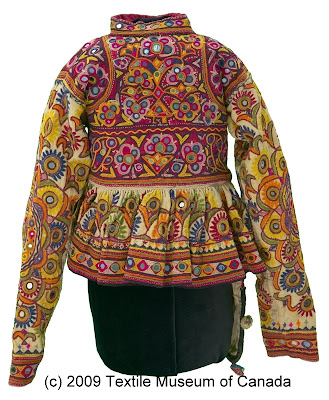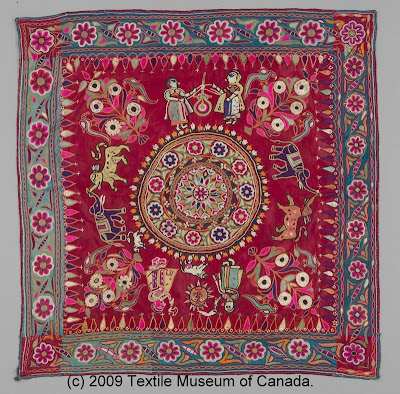Hello everyone:
My recent discovery in Embroidery has been the
Textile Museum of Canada. This museum has a huge collection of historic Embroidery from all over the world including India and it is among the best I have seen so far. Their website with the high level of zoom-in capability on pictures is simply amazing! Do check it out. Meanwhile, here is a glimpse from their Indian Embroidery section.
Copyright Warning: The pictures below were obtained from the museum directly and posted with permission from the Museum. You can link to this page but do not copy or post these pictures elsewhere.

A boy's jacket dated back to the 20th century. It is an example of the work done by the Ahir community from Gujarat, India. The embroidery is done using shishas (mirrors) and arhi work (chain stitch using the tambour needle). Brilliant piece, isn't it? I could stare at the embroidery all day!!

This is the back of the jacket.

This piece of wall hanging is also dated to the 20th century. It is an example of the work done by the Mochi community from Gujarat, India.
The embroidery is 'all over chain stitch' using the arhi (tambour needle). Very different palette of colors and finer work. I would love to have something like this on my wall.
You know, I used to live in Detroit for a few years and Toronto was an easy drive from there. I wish I had known about the museum at that time. Well, perhaps another time. Do we have any readers from Toronto or the Midwest??
Sukanya

.JPG)
.JPG)